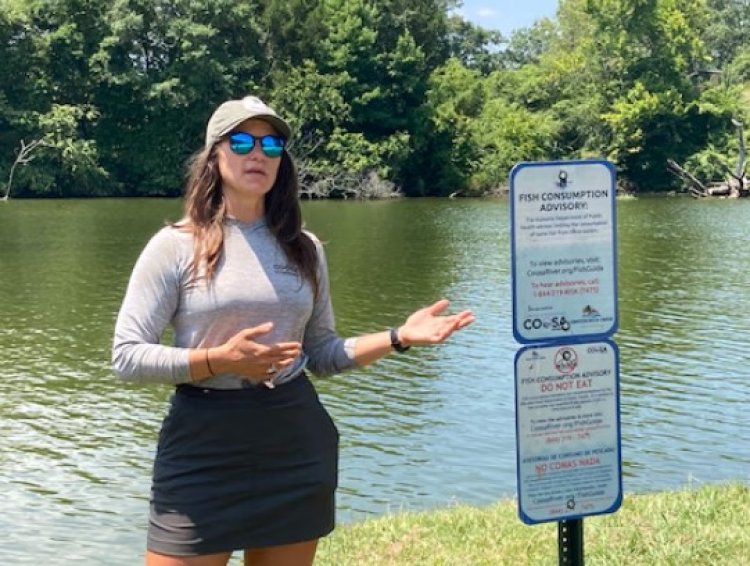Feds Unveil $85 Million Project to Clean Up Contaminated Creek in East Alabama
Cruising down Logan Martin Lake towards Choccolocco Creek, past luxurious lakefront homes and boats worth more than most cars, it doesn’t feel like the entrance to one of the nation's most polluted sites.

Cruising down Logan Martin Lake towards Choccolocco Creek, past luxurious lakefront homes and boats worth more than most cars, it doesn’t feel like the entrance to one of the nation's most polluted sites.
But it is.
“It is sort of tragic,” said Justinn Overton, executive director and staff riverkeeper at Coosa Riverkeeper. “We’re standing here and it’s such a beautiful day, and this is a beautiful stretch of creek. So many people are unaware that the sediment at the bottom of this creek is contaminated with a known carcinogen.”
One of Alabama’s most contaminated sites could finally see remediation in the coming years. The U.S. Environmental Protection Agency has proposed an $85.2 million plan, funded by the responsible party, not taxpayers, to clean up the area by removing contaminated soils and sediments.
The EPA has designated the area around Choccolocco Creek as the Anniston PCB site under its Superfund program due to decades of pollution where man-made chemicals called PCBs entered the creek and surrounding areas. The site is a Superfund Alternative Site, rather than being listed on the EPA’s National Priorities List of the most contaminated sites, thanks to a settlement with responsible parties who agreed to pay for the cleanup.
The chemical plant that produced the contaminants was initially operated by Monsanto but is now run by Solutia, a subsidiary of Eastman Chemical Company. Solutia would pay contractors to carry out the cleanup according to the EPA’s plan, thanks to a 2000 settlement agreement between the company and the EPA.
The EPA’s cleanup plan, available for public comment until July 30, involves digging out contaminated soil from industrial and residential properties, as well as dredging contaminated sediment from the creek and creek banks where Choccolocco Creek enters the Coosa River at Logan Martin Lake.
Overton emphasized the importance of public comments to advocate for thorough removal of contaminated soil and better public notifications about the dangers of PCB exposure. “If you look to the river not just for fun, but also for food, you should comment and tell the EPA that we need all of these PCBs removed from our waterways,” she said.
PCBs, which don’t break down naturally, have been shown to cause cancer in animals, and the EPA considers them a probable human carcinogen. The Alabama Department of Public Health and the Alabama Department of Environmental Management have warned residents for years not to eat any fish caught in Choccolocco Creek, with fish consumption advisories often issued in nearby waters due to PCB contamination.
Overton’s group is concerned that the cleanup plan may not remove enough contaminated soil and stresses the importance of preventing more PCBs from being released downstream during the work. “Coosa Riverkeeper will be playing a very active role in advocating for the most aggressive remediation and ongoing monitoring,” she said.
Solutia’s remediation manager, Gayle Macolly, emphasized that the EPA, not Solutia, is deciding how much contaminated material needs to be removed. “Everything is guided by and overseen by EPA, and we have to follow their guidelines,” Macolly said.
The cleanup is expected to take years, if not decades, to complete. Overton anticipates 30 to 40 years before the remediation plan is finished, with ongoing monitoring once the active work is done. Macolly is more optimistic, hoping to finish in 10 years or less, but acknowledges that getting permission from private property owners for access is a significant delay.
“This is a very long and thoughtful process,” Macolly said. “EPA wants to make sure that everything is looked at and evaluated, so things aren’t missed.”







